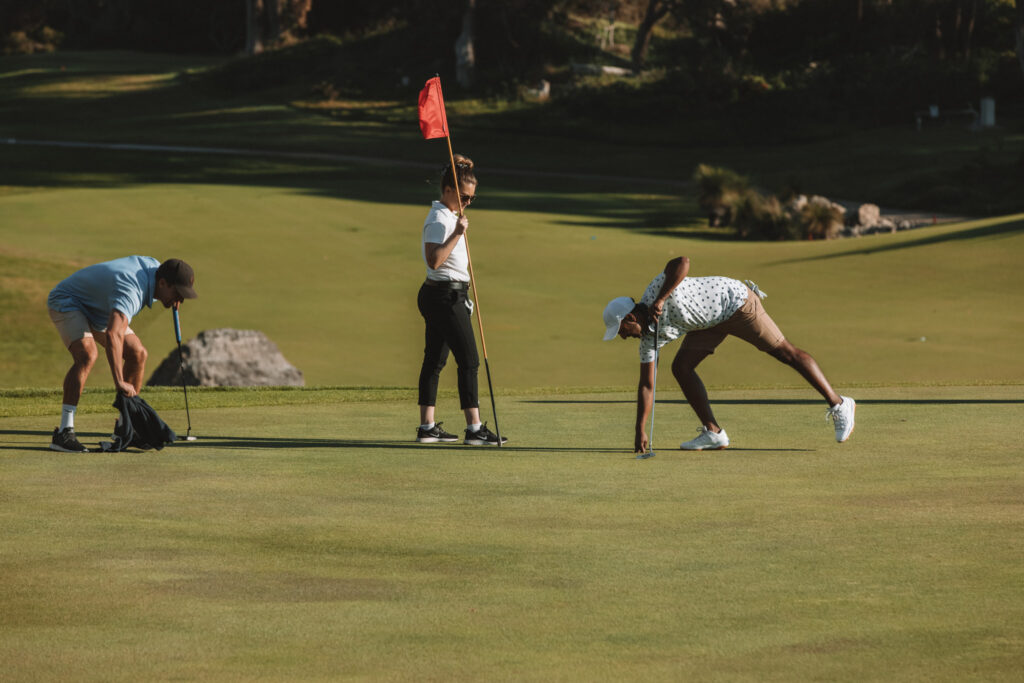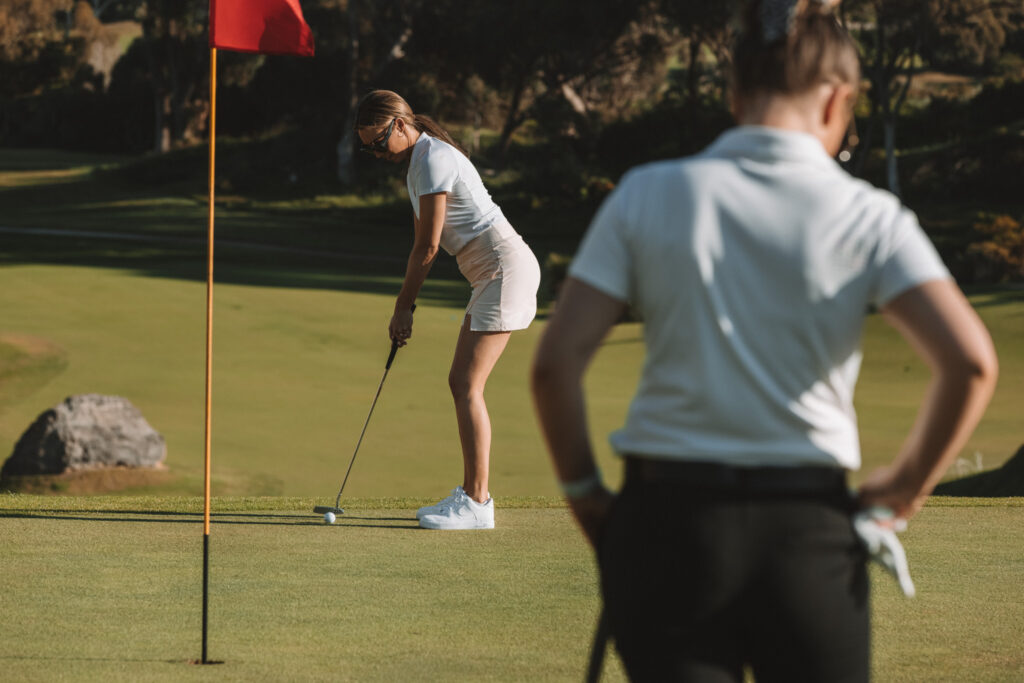
How to Improve Your Short Game: Techniques and Drills to Sharpen Chipping and Putting Skills
A strong short game is essential for lowering your score and handicap. Improving your chipping and putting skills can save strokes and make you more competitive on the course. In this article, we’ll cover how to improve your short game with practical techniques and drills that can help both your chipping and putting.
Why the Short Game Matters
The short game refers to the shots you play close to the green—mainly chipping, pitching, and putting. Even if you’re excellent off the tee or with irons, struggling near the green can quickly add strokes to your score. This is why focusing on short-game improvement can have a big impact.
Most of the strokes in a round of golf come from within 100 yards of the green, meaning mastering the short game is important for all players, from beginners to professionals.

Techniques to Improve Your Chipping
Chipping is an essential part of the short game, allowing you to control the ball’s trajectory and get it as close to the hole as possible. Below are a few key techniques to improve your chipping:
1. Choose the Right Club
When chipping, selecting the right club is key. While many golfers naturally take a wedge, there are times when a lower lofted club, like an 8-iron or 9-iron, might be more suitable. Using these clubs keeps the ball lower and allows it to run toward the hole, which is often easier to control than a high-flighted wedge shot.
2. Control the Ball’s Trajectory
To control the ball’s trajectory, focus on your hand position and weight distribution. For a lower shot, keep your hands ahead of the ball, with more weight on your front foot. For a higher chip shot, position the ball slightly forward in your stance and allow your hands to stay neutral through the shot.
3. Focus on Crisp Contact
A clean strike is essential for successful chipping. Keep your wrists firm during the shot to avoid flipping or scooping the ball. Think of the motion as more of a pendulum swing, and let the shoulders, not the wrists, drive the shot. This technique leads to more consistent and solid contact, improving accuracy.
Drills to Sharpen Your Chipping
1. Landing Zone Drill
Pick a spot on the green where you want your ball to land. Practice chipping balls from different lies, focusing on hitting that spot every time. This drill helps you control the ball’s distance and get it to roll out properly toward the hole.
2. One-Club Chipping Drill
Limit yourself to one club, such as a 7-iron, and practice chipping from different distances and lies. This drill encourages creativity and forces you to focus on feel rather than technique, which can help when you’re in tough situations on the course.
3. One-Handed Drill for Better Feel
For right-handed golfers, practice chipping using just your right hand (left hand for lefties). This drill helps develop a better feel and control over your chip shots, as it forces you to rely more on touch rather than mechanics. Focus on making smooth, controlled swings while keeping your body stable. This drill improves wrist control and overall coordination, leading to more consistent chips.

Techniques to Improve Your Putting
Putting is the most important part of the short game, as it’s the final step to putting the ball into the hole. Here are some techniques to improve your putting:
1. Develop a Consistent Putting Stroke
A consistent stroke is the key to successful putting. Focus on a smooth pendulum-like motion using your shoulders and keeping your wrists quiet. Many players benefit from simplifying their stroke by using a straight-back-and-through technique, minimising unnecessary movement.
2. Control Speed
Speed control is just as important as reading the break of the green. Practice hitting putts from different distances, paying close attention to how hard you strike the ball. Focus on developing a feel for how far the ball rolls with each stroke, rather than fixating on the hole.
3. Read the Green Properly
Reading the green is essential for knowing how the ball will break. Look at the slopes and contours around the hole. Start from behind your ball and visualise the ball’s path to the hole. Taking time to assess the green before each putt can help you make better reads.
Drills to Sharpen Your Putting
1. Gate Drill for Alignment
Set up two tees just wider than your putter’s width. Practice putting the ball through the gate without hitting the tees. This drill improves your alignment and ensures your putter is striking the ball properly.
2. Lag Putting Drill
Pick a spot 30 to 40 feet from the hole. Focus on getting the ball within a 3-foot circle around the hole. This drill helps improve your distance control on long putts and reduces the chance of three-putting.
3. Circle Drill for Short Putts
Place a few tees around the hole, between 3 to 4 feet from the hole. Focus on making as many putts in a row from this distance. This drill helps with confidence on the shorter putts.

Practice Tips for Improving Your Short Game
1. Dedicate Time to Short Game Practice
Many golfers focus on their long game, forgetting about the short game. However, dedicating just 20-30 minutes of your practice time to chipping and putting can make a massive difference. Aim for balance in your practice routine, making sure you’re not just hitting long drives but also improving your short game skills.
2. Practice Under Pressure
When practising, try to put yourself in a game-like situation by creating challenges for yourself. Set targets, give yourself a limited number of strokes, or turn it into a competition with a friend. Practising under pressure will help prepare you for when you get on the course.
3. Track Your Progress
Keep track of your success during practice sessions. Note how many putts you sink from different distances or how consistently you’re hitting your landing zones. Tracking your performance helps you stay motivated and identify areas for further improvement.
Conclusion
Improving your short game is one of the most effective ways to lower your scores and handicap which will make you more competitive on the golf course, as well as a more complete golfer. By mastering the fundamentals of chipping and putting and incorporating these drills into your practice routine, you’ll see significant improvements in your ability to get up and down around the green.
Whether you’re a beginner or an experienced player, sharpening your short game skills will boost your confidence and lead to better results on the course. Take the time to focus on these essential techniques and drills, and watch your scores drop!













